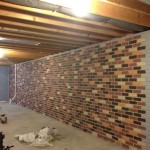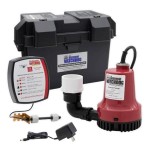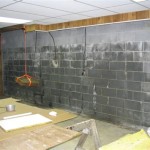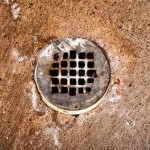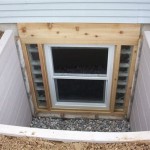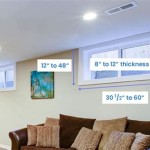How to Finish a Basement Around Sump Pump Pits in Vietnam
Finishing a basement in Vietnam presents unique challenges, especially when considering the presence of sump pump pits. These pits are essential for managing groundwater and preventing flooding, but they can also disrupt the aesthetic and functional flow of a basement space. This article outlines essential steps to effectively finish a basement around sump pump pits, taking into account the specific considerations prevalent in Vietnam.
Understanding Vietnamese Climate and Basement Challenges
Vietnam, with its tropical monsoon climate, experiences high rainfall and humidity. This necessitates the installation of sump pumps in basements to manage water infiltration and prevent damage. However, these pits can be visually unappealing and pose obstacles for flooring and furniture placement.
The Vietnamese construction industry is evolving, and basement finishing practices are still developing. While traditional methods like concrete walls and simple tile flooring are common, modern designs often incorporate more sophisticated materials and finishes. This necessitates a nuanced approach to integrating sump pump pits into the overall basement design.
Step-by-Step Guide to Finishing Around Sump Pump Pits
Finishing a basement around sump pump pits requires careful planning and execution. Here's a step-by-step guide designed for Vietnamese contexts:
1. Planning and Design
The first stage involves meticulous planning and design. This includes:
- Identifying and Assessing Sump Pump Pits: Accurately locate and evaluate the size, shape, and accessibility of sump pump pits. Consider the placement of pipes and electrical wiring.
- Designing the Basement Layout: Plan the layout to accommodate the sump pump pit while maximizing usable space. Consider integrating the pits into the design, perhaps by incorporating them into a utility room or closet.
- Choosing Suitable Materials: Select moisture-resistant and durable materials for walls, floors, and ceilings, taking into account the high humidity levels typical of Vietnam. Consider materials like ceramic tiles, waterproof paint, and moisture-resistant drywall.
2. Building and Finishing
Once the design is finalized, the building and finishing process can begin. This involves:
- Sump Pump Pit Enclosure: Consider building a decorative enclosure around the sump pump pit. This could be a wooden frame with drywall or plywood panels, or a custom-made enclosure using materials like brick or stone. The enclosure should be well-ventilated and have a removable panel for easy access to the sump pump.
- Floor Finishing: Ensure proper drainage around the sump pump pit. If using tile, ensure the grout lines are sealed to prevent water seepage. Other options include epoxy flooring or raised wood flooring with a waterproof membrane underneath.
- Wall Finishing: Choose moisture-resistant paint or wall coverings for the basement walls. Consider using tile or stone for the areas around the sump pump pit for added durability and aesthetic appeal. Ensure proper ventilation to mitigate humidity.
3. Safety and Maintenance
Maintaining the integrity and functionality of the basement requires ongoing attention to safety and maintenance:
- Regular Sump Pump Inspection: Regularly check the sump pump for proper operation and maintenance. This includes cleaning the pit of debris, checking the float switch, and ensuring the discharge pipe is functioning correctly.
- Waterproofing and Moisture Control: Implement measures to mitigate moisture and prevent humidity buildup in the basement. This can involve installing a dehumidifier, ensuring proper ventilation, and addressing any potential leaks or cracks in the foundation.
- Electrical Safety: Ensure all electrical wiring connected to the sump pump is properly installed and grounded for safety. Avoid overloading electrical circuits and follow all safety guidelines.
Additional Considerations
Beyond the basic steps, there are additional considerations that are particularly relevant to Vietnamese contexts:
- Local Building Codes and Regulations: Comply with all applicable building codes and regulations regarding basement finishing and sump pump installation in Vietnam.
- Climate Considerations: Factor in the high humidity and rainfall experienced in Vietnam. Select materials that are moisture-resistant and ensure adequate ventilation to mitigate humidity.
- Sustainability and Energy Efficiency: Consider implementing sustainable practices like using energy-efficient lighting and ventilation systems to reduce energy consumption in the basement.
Finishing a basement around sump pump pits in Vietnam requires careful planning and execution. By adhering to the outlined steps and considering the specific challenges of the Vietnamese climate, homeowners can create a functional and aesthetically pleasing basement space that adds value to their property.

8 Essential Sump Pump Maintenance Tips Plumbwize

Need To Cover Your Sump Pump 5 Great Ideas That Work 1 Tom Plumber

Why Did Your Sump Pump Fail Here Are Common Reasons

A Guide To Proper Sump Dump Discharge Basement Defender

Sump Pump Installation How To Install A

Waterproofing Our Basement Installing Drains And A Sump Pump Grove House Reno

Basement Sump Pumps Zoeller Pump Company

Do All Basements Need A Sump Pump Beck Electric

Sump Pump In Finished Basement

What Are The Most Common Sump Pump Problems Bassett Services
Related Posts
